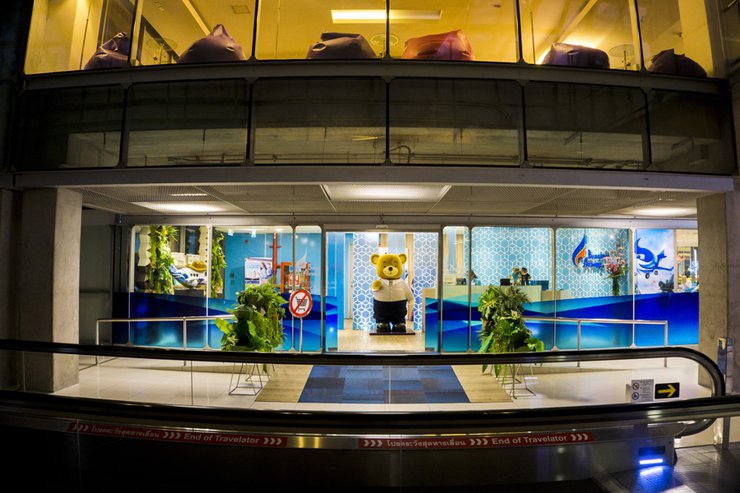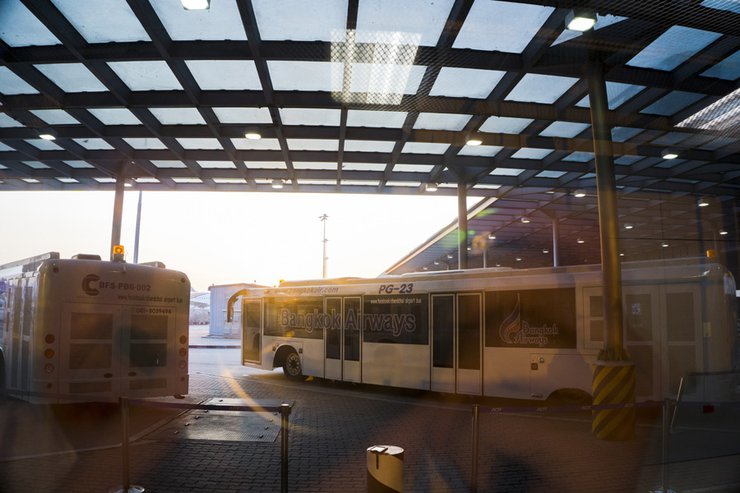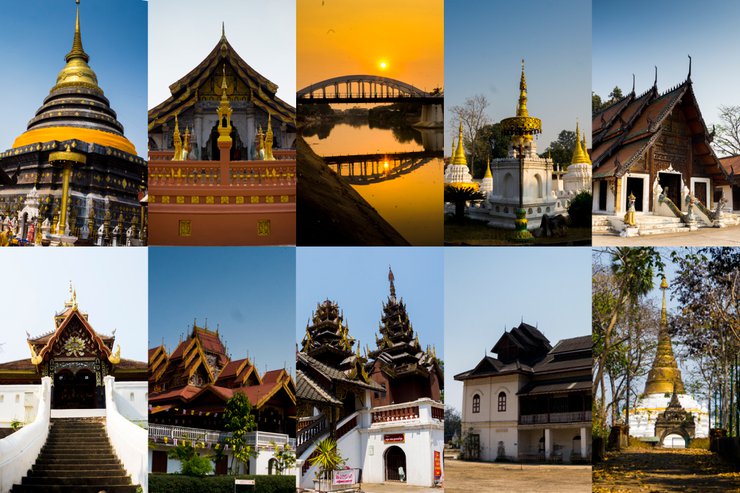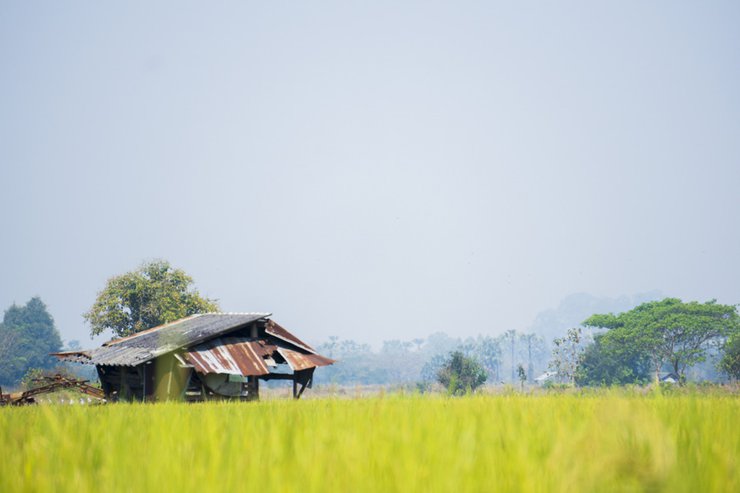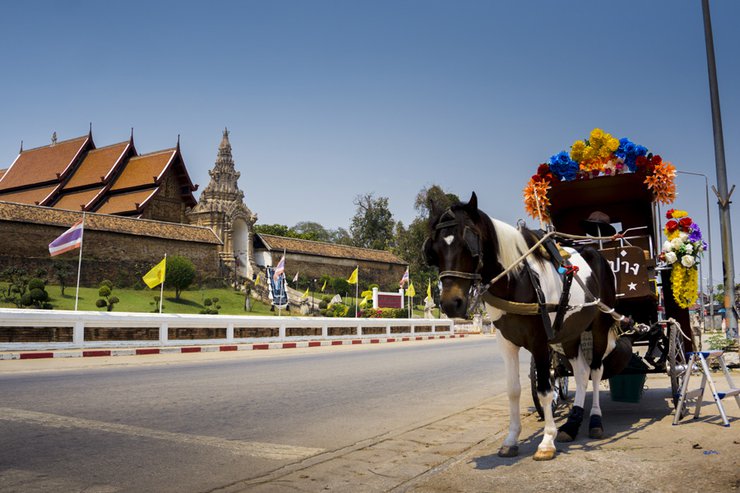Situated in the northern region of Thailand, Lampang, also known as Khelang Nakhon, is a charming city perfect for a relaxing getaway. Despite its relatively small size, Lampang offers a wealth of attractions, making it more than just a stopover destination. With just two days and one night, you can explore the city's highlights, including its ancient temples and quaint town center.



For my trip to Lampang, I opted for Bangkok Airways (thanks to a promotional ticket we snagged). The airline's perk? Free lounge access and a chance to indulge in the legendary rice porridge. On top of that, it was my first time flying on an ATR aircraft. Honestly, I found the airline's service to be excellent. Initially, I expected the aircraft to be a bit older, but to my surprise, it was brand new and impeccably clean.

Upon arrival at Lampang Airport, reaching the city center is straightforward. Exiting the arrival hall, turn left and locate the green and yellow shared taxis. Inform the driver of your destination within the city (in my case, the transportation terminal). Inquire about the fare, which is shared among passengers. If no other passengers are present, you may need to hire the taxi exclusively (the fare is uncertain; I paid 50 baht with three other passengers).
The customer inquired about the reason for the delivery, stating that they had reserved a motorcycle at the Lamphang motorbike rental shop, which is located near the Lamphang transportation office. They plan to use the motorcycle for all their travels within Lamphang city. The customer provided a map with their planned destinations, which are not far apart, except for a few locations that might be farther away. Therefore, they decided to visit those farther locations outside the city on the first day.


All tourist attractions can be found on the map on your smartphone (you won't get lost, I'm sure there are all the places you need). I left the bus station to go to Wat Phra That Lampang Luang, which is about 10 kilometers from the city center. If you want to go easily, just follow Phahonyothin Road (Highway 1) and then follow the signs to Wat Phra That Lampang Luang. When you reach the intersection, turn onto Highway 1034. Since I was riding a motorcycle, I didn't want to go on the main road, so I opened my GPS and took a shortcut (I got a little lost). I found a view of the rice fields, which was great (at the moment, Phahonyothin Road on the way to the temple is under repair, closed to one lane, very heavy traffic).

The Wat Phra That Lampang Luang is a significant temple in Lampang, Thailand. It is considered one of the most well-preserved wooden temples in the country.




The Million Gold Buddha Shrine is located at the rear of the Royal Chapel. Inside, the Million Gold Buddha statue is enshrined. The statue was cast in 1576.




Another highlight of Wat Phra That Lampang Luang is the Phra Phutthabat Wihan, a square brick structure built over the footprint of the Buddha. Inside, the refraction of light creates an inverted image of the main stupa and the wihan. (Women are not allowed to enter.)



However, there is a pagoda beside the main stupa where women can enter to see the shadow of the stupa.

It is better to go to Wat Phra That Doi Phra Nam, which is about 20 kilometers from here.

As usual, I turned on my GPS and chose a less-traveled route. The road was quite frightening, to say the least. I took Highway 1036, which was in poor condition, alternating between cobblestones and concrete. To make matters worse, there were wildfires on both sides of the road when I went. Riding a motorcycle alone was terrifying. However, since I had already come this far, I had to continue. The road I thought was bad was nothing compared to the one I encountered before reaching the temple. The road was entirely cobblestone, as shown in the picture. The road leading up to the temple, on the other hand, was in good condition and not too steep, making it easy to ride.







The ancient Wat Phra That Doi Phra Nam in Lampang was once a deserted temple in a desolate area, according to local lore. (For historical accuracy, please consult Google.) Locals also claim that during the winter, the temple offers breathtaking views of a morning mist. After visiting the temple, I returned to the city and headed towards the Rachada Bridge. On my way back, I encountered another wildfire, which was particularly frightening due to its intensity. I opted to return via the Phahonyothin Road, which was undergoing construction and had only one lane open, resulting in significant traffic congestion. If you're planning a trip during this time, consider seeking alternative routes.








The Rachaphisesak Bridge is a bridge over the Wang River. The people of Lampang Province built it to celebrate the 25th anniversary of the reign of King Chulalongkorn (Rama V) in 1894.




The room was excellent, very clean. The size of the room was also good, and the equipment was complete. The amenities were also complete. Most importantly, if you want to rent a motorbike at the hotel, you can contact the hotel to rent one.


I originally planned to visit Kad Kong Ta, but it is only open on Saturdays and Sundays. Since I was there on a Friday, I was unable to go. However, there is another option: the cultural street on Wang Nuea Road (I don't know the name of the market). It is located near my hotel.

The next morning, I woke up early and went out to the balcony. I saw a big, bright sun.



This morning, I will visit Wat Chedi Sao Lang, which is about 4 kilometers from the city center. I will ride my motorbike along Phra Tu Ma Road. After a while, I will see the old city gate. I will continue riding straight until I see a sign for the temple. Then, I will turn left and enter the temple.




We have arrived at Wat Chedi Sao Lang (Sao means 20, Lang means towers. Wat Phra Chedi Sao Lang translates to the temple with 20 towers).



Wat Phra Kaew Don Tao Suchada, an ancient and beautiful temple dating back thousands of years, once housed the Emerald Buddha (Phra Kaew Morakot) from 1336 to 1911. During my visit, the temple was undergoing renovations, limiting my exploration. Next, I headed to Baan Sao Nak, but upon arrival, I encountered a wedding ceremony with a large crowd, making me hesitant to enter. Continuing my drive, I passed Wat Pratu Pong and decided to make a stop.


Wat Pratu Pong is a temple with historical significance, featuring the ancient city gate (Pratu Pong) and the remains of a watchtower from the era of Phraya Kavila, the ruler of Lamphang. This watchtower served as a crucial defense point during a significant battle against the Burmese army in 1787.




Wat Pongsanuk is a temple with ancient and beautiful architecture, so much so that it received the 2008 Asia-Pacific Heritage Award for Cultural Heritage Conservation from UNESCO.



Wat Sri Rong Mueang, a Burmese temple in Lamphang province, features significant architecture such as a wooden wihan with a multi-tiered gable roof and nine spires, reflecting Burmese artistic style.



Wat Sri Chum is an ancient Burmese temple constructed entirely of wood from the Burmese forests. It houses a golden stupa in Burmese and Mon architectural styles, containing sacred relics brought from Burma and revered by the faithful. The temple's wooden roof features intricate carvings and a pointed spire, showcasing exquisite craftsmanship. Wat Sri Chum stands as the largest Burmese temple among the 31 such temples found in Thailand.

Continuing our journey, we arrive at Wat Chai Mongkol, also known as Wat Jong Kham. The temple's viharn, a white building with a Burmese-style wooden roof, houses a beautiful bronze Buddha statue originally from Mandalay, Myanmar. (Please note that the temple is currently undergoing renovations, as seen in the image, with the temple grounds being repaved. Therefore, we were unable to enter.)





Originally, I planned to visit the Dhanabadee Ceramic Museum, but I caught a glimpse of a temple on the hill in front of me, so I decided to visit the temple instead. This temple is Wat Mon Chamsil, located near the Dhanabadee Ceramic Museum. Wat Mon Chamsil is an ancient temple with ancient Burmese art. The temple is situated on a hill, offering a panoramic view of the city of Lamphun from above.

After returning the rental car, I headed back to the airport. The excitement began when I tried to hail a taxi to the airport. The driver quoted 200 baht, which was more than I expected. Initially, I was willing to pay up to 100 baht, but at that price, I decided to walk to the airport instead. In the end, I walked to the airport, which was only about 3 kilometers away. Before entering the airport, there is a market called Phra Bat Market where you can buy snacks or souvenirs.
That concludes my 2-day, 1-night trip to Lampang. I must say that visiting Lampang and exploring its ancient temples was a fantastic experience. Lampang is a pleasant city to live in (although it can get a bit hot). I plan to return and explore other parts of Lampang in the future. Thank you for following along.
Follow my travel reviews and connect with me on: Fanpage เที่ยวคนเดียวต้องสตรอง
เที่ยวคนเดียวต้องสตรอง
Friday, October 4, 2024 3:20 PM




